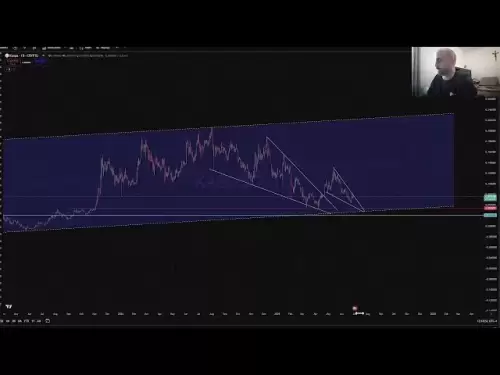-
 Bitcoin
Bitcoin $107,352.1067
0.28% -
 Ethereum
Ethereum $2,429.3531
-0.90% -
 Tether USDt
Tether USDt $1.0001
-0.02% -
 XRP
XRP $2.1894
4.62% -
 BNB
BNB $646.7968
0.36% -
 Solana
Solana $147.4290
4.03% -
 USDC
USDC $0.9998
-0.02% -
 TRON
TRON $0.2756
1.52% -
 Dogecoin
Dogecoin $0.1630
1.14% -
 Cardano
Cardano $0.5612
1.18% -
 Hyperliquid
Hyperliquid $37.0580
-0.05% -
 Bitcoin Cash
Bitcoin Cash $496.9410
-0.09% -
 Sui
Sui $2.7318
3.19% -
 Chainlink
Chainlink $13.1503
0.58% -
 UNUS SED LEO
UNUS SED LEO $9.0766
0.55% -
 Avalanche
Avalanche $17.7220
1.46% -
 Stellar
Stellar $0.2380
1.52% -
 Toncoin
Toncoin $2.8439
0.38% -
 Shiba Inu
Shiba Inu $0.0...01143
1.84% -
 Litecoin
Litecoin $85.8053
1.47% -
 Hedera
Hedera $0.1483
2.70% -
 Monero
Monero $314.3240
2.12% -
 Bitget Token
Bitget Token $4.6725
0.77% -
 Dai
Dai $1.0000
0.00% -
 Polkadot
Polkadot $3.3555
1.28% -
 Ethena USDe
Ethena USDe $1.0001
0.02% -
 Uniswap
Uniswap $7.0890
2.64% -
 Pi
Pi $0.5355
-3.40% -
 Pepe
Pepe $0.0...09393
1.06% -
 Aave
Aave $256.8136
-1.90%
How to reduce the middleman spread when buying USDT?
To minimize the spread when buying USDT, compare fees and liquidity across exchanges, consider P2P platforms, time your purchases wisely, and diversify your methods.
Apr 01, 2025 at 12:35 pm

Understanding Middleman Spread in USDT Purchases
The price you pay for USDT, a stablecoin pegged to the US dollar, often differs from the actual USD equivalent. This discrepancy arises from the "spread," the difference between the buying and selling price offered by exchanges or intermediaries. Minimizing this spread is crucial for maximizing your investment. Several factors contribute to this spread, including exchange fees, liquidity, and the trading volume of the specific USDT pair you are using. Reducing the spread involves strategic choices in your purchasing process.
Choosing the Right Exchange
The exchange you select significantly impacts the spread you encounter. Larger, more established exchanges generally offer tighter spreads due to higher trading volume and greater liquidity. However, fees can vary, so it's vital to compare the total cost, including fees and spread, before making a decision. Consider exchanges with robust security measures and a user-friendly interface.
- Research different exchanges: Compare fees, spreads, and trading volumes before selecting one.
- Check exchange reputation: Look for reviews and assess the security measures in place.
- Consider exchange liquidity: Higher liquidity usually translates to tighter spreads.
Utilizing Peer-to-Peer (P2P) Trading Platforms
P2P platforms allow you to buy USDT directly from other users, often bypassing the traditional exchange structure. This can potentially reduce the spread, as you're negotiating the price directly with the seller. However, P2P trading involves inherent risks, including potential scams and the need for careful due diligence in selecting trustworthy trading partners.
- Verify seller reputation: Check reviews and ratings before engaging in a transaction.
- Use escrow services: Utilize platforms with built-in escrow services to protect your funds.
- Communicate clearly: Ensure all terms and conditions are explicitly agreed upon before transferring funds.
Timing Your Purchases
Market conditions influence the spread. High trading volume often leads to tighter spreads, while periods of low activity can widen them. Monitoring market trends and choosing opportune moments to buy can help you minimize your costs. Consider using charting tools and analyzing trading patterns to identify favorable buying opportunities. Be aware that this requires a degree of market knowledge and experience.
- Monitor trading volume: Buy during periods of high trading volume for potentially tighter spreads.
- Analyze market trends: Use charting tools to identify potential price fluctuations.
- Be patient: Don't rush into a purchase; wait for favorable market conditions.
Optimizing Your Trading Strategy
Your trading strategy can affect the spread you experience. For instance, using limit orders instead of market orders allows you to specify the price at which you're willing to buy. This helps avoid paying a premium during periods of high volatility. However, limit orders don't guarantee execution if the price doesn't reach your specified level.
- Use limit orders: Specify your desired price to avoid paying above market value.
- Avoid market orders during volatility: Market orders execute immediately but might result in higher spreads during volatile periods.
- Consider using stop-limit orders: A combination of stop and limit orders for conditional buying.
Understanding Fees and Charges
Exchanges and P2P platforms charge various fees. Transaction fees, deposit fees, and withdrawal fees all contribute to the overall cost. These fees can add up, especially for frequent traders. Therefore, comparing the total cost, including fees and spread, is crucial for making informed decisions. Always factor these fees into your calculations when comparing different options.
- Compare total cost: Consider all fees, including transaction, deposit, and withdrawal fees.
- Look for exchanges with low fees: Prioritize exchanges with transparent and competitive fee structures.
- Negotiate fees on P2P platforms: In some cases, you might be able to negotiate fees with P2P sellers.
Leveraging Automated Trading Bots (with Caution)
Some advanced traders use automated trading bots to execute trades at optimal prices. These bots can potentially identify and exploit small price discrepancies, minimizing the spread. However, using bots requires technical expertise and carries risks, including the potential for losses if the bot's algorithms malfunction. It's essential to thoroughly research and understand the risks involved before using automated trading bots.
- Research thoroughly: Understand the bot's algorithms and potential risks before using it.
- Start with small amounts: Begin with small investments to test the bot's performance.
- Monitor performance closely: Continuously monitor the bot's activity and adjust settings as needed.
Diversifying Your Purchasing Methods
Don't rely on a single method for buying USDT. Exploring multiple options, such as different exchanges and P2P platforms, can help you find the best price at any given time. This diversification strategy reduces your dependence on any single platform and minimizes the risk of being exposed to unfavorable spreads.
- Use multiple exchanges: Compare prices across different exchanges before making a purchase.
- Explore P2P platforms: Consider using P2P platforms to potentially find better deals.
- Remain flexible: Be adaptable and willing to switch methods depending on market conditions.
Frequently Asked Questions
Q: What is the average spread for buying USDT?
A: The spread for buying USDT varies depending on the exchange, trading volume, and market conditions. It can range from a few basis points to several percentage points.
Q: Are P2P platforms always cheaper than exchanges?
A: Not necessarily. While P2P platforms can offer lower spreads, they also involve risks and may have hidden fees. Careful comparison is crucial.
Q: How can I protect myself from scams when using P2P platforms?
A: Use reputable platforms with escrow services, verify seller reputations, and communicate clearly before transferring funds. Never send funds without confirmation.
Q: What are the risks of using automated trading bots?
A: Risks include algorithm malfunctions, potential losses due to unforeseen market changes, and security vulnerabilities. Thorough research and understanding are essential.
Q: Is it better to buy USDT with fiat currency or cryptocurrency?
A: Both methods have pros and cons. Buying with fiat might involve higher fees, while buying with crypto might incur exchange rate fluctuations and potentially higher gas fees. The best approach depends on your specific circumstances and preferences.
Disclaimer:info@kdj.com
The information provided is not trading advice. kdj.com does not assume any responsibility for any investments made based on the information provided in this article. Cryptocurrencies are highly volatile and it is highly recommended that you invest with caution after thorough research!
If you believe that the content used on this website infringes your copyright, please contact us immediately (info@kdj.com) and we will delete it promptly.
- RUVI Token Soars: Can It Eclipse Cardano's Forecast?
- 2025-06-29 02:30:12
- Meme Coin Mania: Can Little Pepe Outshine Shiba Inu and Dogecoin?
- 2025-06-29 02:30:12
- XRP Tokens: Navigating Financial Status and the Art of Buying In
- 2025-06-29 02:50:12
- Shiba Inu, Trump Coin, and the Crypto Bull Run: What's the Deal?
- 2025-06-29 03:50:12
- Coinbase on the 2025 List of Influential Companies: A Crypto Powerhouse?
- 2025-06-29 04:10:12
- Solana, Shiba Inu, and Pepe Coin: What's Hot and What's Not in the Crypto World
- 2025-06-29 03:55:13
Related knowledge
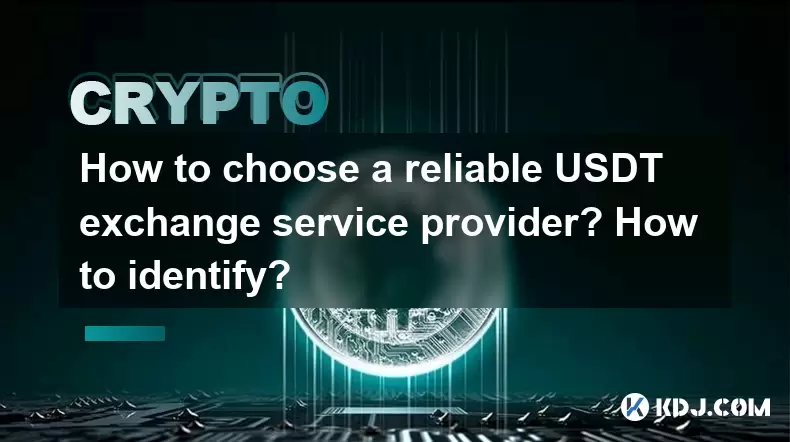
How to choose a reliable USDT exchange service provider? How to identify?
Jun 12,2025 at 03:15pm
Understanding the Role of USDT in Cryptocurrency TradingUSDT (Tether) is one of the most widely used stablecoins in the cryptocurrency market. It is designed to maintain a 1:1 peg with the U.S. dollar, offering traders and investors a way to hedge against volatility while remaining within the crypto ecosystem. Choosing a reliable USDT exchange service p...
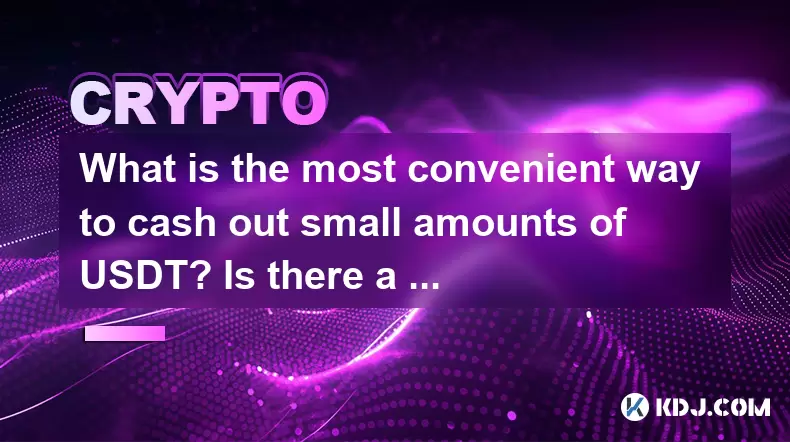
What is the most convenient way to cash out small amounts of USDT? Is there a shortcut?
Jun 11,2025 at 11:00pm
Understanding the Need to Cash Out Small USDT AmountsCashing out small amounts of USDT can be a challenge for many crypto users. Traditional methods often involve high fees, minimum withdrawal limits, or cumbersome verification processes that make it inefficient for small transactions. The key is to find a method that balances speed, cost, and convenien...
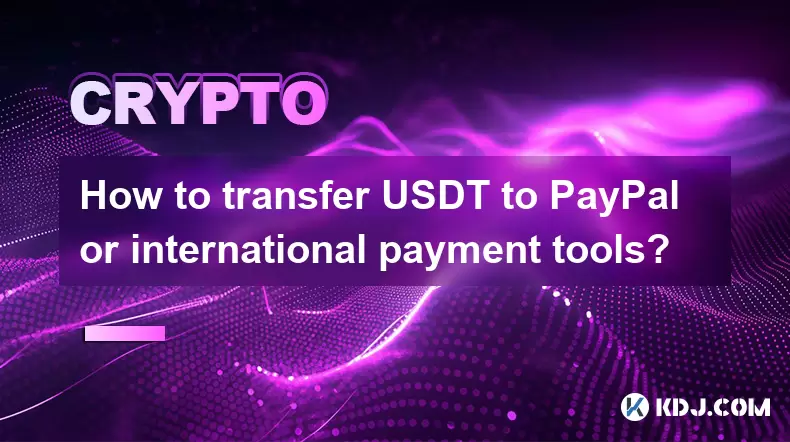
How to transfer USDT to PayPal or international payment tools?
Jun 15,2025 at 05:28am
Understanding the Basics of USDT and PayPal IntegrationUSDT (Tether) is a stablecoin pegged to the US dollar, offering blockchain-based value transfer with minimal volatility. PayPal, on the other hand, is a centralized digital wallet that facilitates fiat currency transactions globally. Direct integration between USDT and PayPal does not exist due to t...
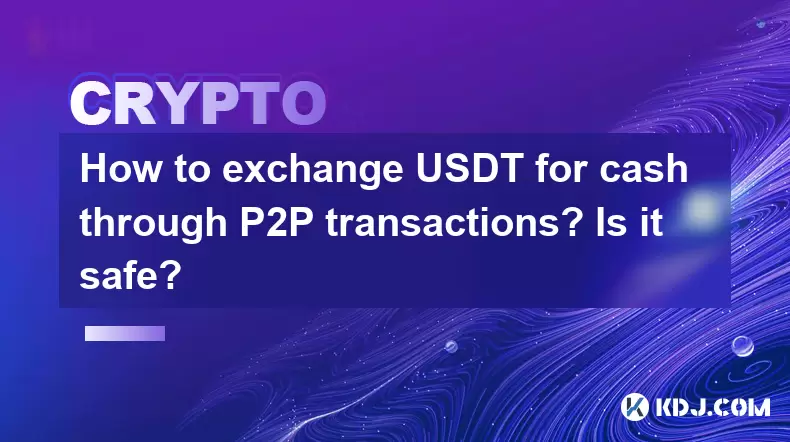
How to exchange USDT for cash through P2P transactions? Is it safe?
Jun 18,2025 at 07:56am
Understanding USDT and P2P TransactionsTether (USDT) is a stablecoin pegged to the value of the US dollar, making it a popular choice for users who want to avoid the volatility of other cryptocurrencies while still participating in the crypto ecosystem. Peer-to-peer (P2P) transactions allow individuals to trade directly with each other without going thr...
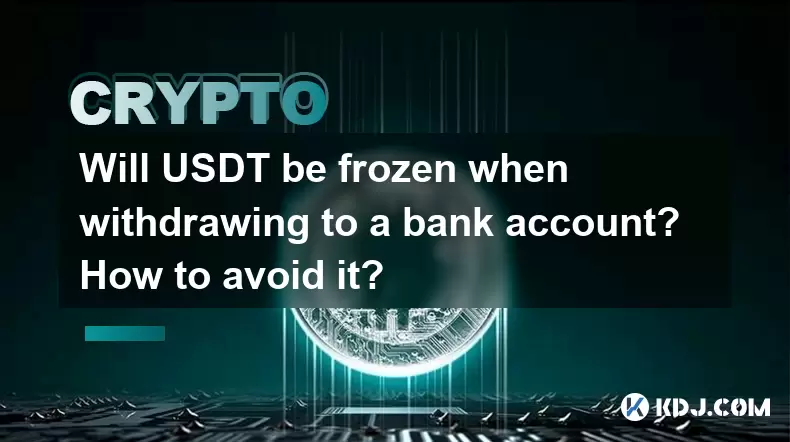
Will USDT be frozen when withdrawing to a bank account? How to avoid it?
Jun 15,2025 at 10:03am
Understanding USDT Withdrawals and Bank Account Freezing RisksWhen users decide to withdraw USDT (Tether) to a bank account, one of the most common concerns is whether their funds will be frozen during the process. This concern stems from real-life cases where individuals have encountered delays or restrictions when converting digital assets into fiat c...
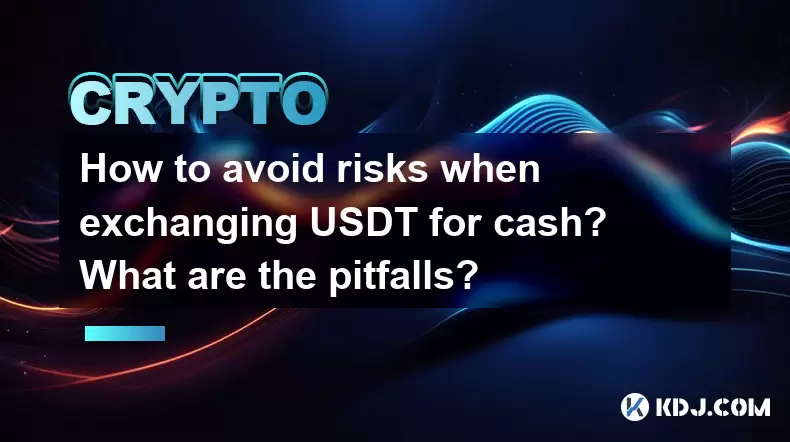
How to avoid risks when exchanging USDT for cash? What are the pitfalls?
Jun 11,2025 at 08:14pm
Understanding the Risks of Exchanging USDT for CashWhen exchanging USDT (Tether) for cash, users must be aware of the potential risks involved. As a stablecoin pegged to the US dollar, USDT is widely used in crypto transactions due to its price stability. However, converting it into fiat currency like USD or CNY can expose users to several pitfalls, inc...

How to choose a reliable USDT exchange service provider? How to identify?
Jun 12,2025 at 03:15pm
Understanding the Role of USDT in Cryptocurrency TradingUSDT (Tether) is one of the most widely used stablecoins in the cryptocurrency market. It is designed to maintain a 1:1 peg with the U.S. dollar, offering traders and investors a way to hedge against volatility while remaining within the crypto ecosystem. Choosing a reliable USDT exchange service p...

What is the most convenient way to cash out small amounts of USDT? Is there a shortcut?
Jun 11,2025 at 11:00pm
Understanding the Need to Cash Out Small USDT AmountsCashing out small amounts of USDT can be a challenge for many crypto users. Traditional methods often involve high fees, minimum withdrawal limits, or cumbersome verification processes that make it inefficient for small transactions. The key is to find a method that balances speed, cost, and convenien...

How to transfer USDT to PayPal or international payment tools?
Jun 15,2025 at 05:28am
Understanding the Basics of USDT and PayPal IntegrationUSDT (Tether) is a stablecoin pegged to the US dollar, offering blockchain-based value transfer with minimal volatility. PayPal, on the other hand, is a centralized digital wallet that facilitates fiat currency transactions globally. Direct integration between USDT and PayPal does not exist due to t...

How to exchange USDT for cash through P2P transactions? Is it safe?
Jun 18,2025 at 07:56am
Understanding USDT and P2P TransactionsTether (USDT) is a stablecoin pegged to the value of the US dollar, making it a popular choice for users who want to avoid the volatility of other cryptocurrencies while still participating in the crypto ecosystem. Peer-to-peer (P2P) transactions allow individuals to trade directly with each other without going thr...

Will USDT be frozen when withdrawing to a bank account? How to avoid it?
Jun 15,2025 at 10:03am
Understanding USDT Withdrawals and Bank Account Freezing RisksWhen users decide to withdraw USDT (Tether) to a bank account, one of the most common concerns is whether their funds will be frozen during the process. This concern stems from real-life cases where individuals have encountered delays or restrictions when converting digital assets into fiat c...

How to avoid risks when exchanging USDT for cash? What are the pitfalls?
Jun 11,2025 at 08:14pm
Understanding the Risks of Exchanging USDT for CashWhen exchanging USDT (Tether) for cash, users must be aware of the potential risks involved. As a stablecoin pegged to the US dollar, USDT is widely used in crypto transactions due to its price stability. However, converting it into fiat currency like USD or CNY can expose users to several pitfalls, inc...
See all articles























